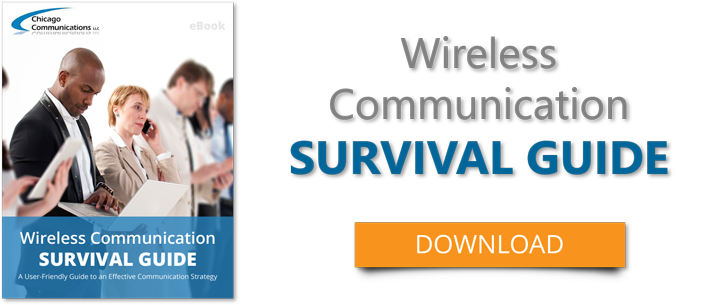When you identify the biggest challenges your organization faces, one of the most common solutions to those issues it better communication. When you are effectively communicating with your staff, you minimize risks for downtime, safety issues, or even customer satisfaction.
What commonly happens in this scenario is that a business identifies this challenge and knows that better communication will help, but is unsure of the next steps to take, in terms of actual technologies and solutions. There are a lot of options to consider, and not every solution is right for every business or industry. Here are three communication solutions that can help out just about any company:
Wireless Networks
When businesses, communities, or organizations begin looking into improving their connectivity and communication, one of the first solutions they turn to is wireless networking, and for good reason.
Wireless networking is essentially when a computer-based network uses wireless data connections for connecting network nodes. It is an effective alternative to traditional wired networks and carries multiple benefits, including:
- Resolving connectivity issues where fiber or copper cannot go
- Eliminating recurring fees charged by phone companies
- Providing reliable network connections that minimize downtime and improve productivity
- Extending your secure network to a wider area of coverage
One of the best examples of how a wireless network improvement or installation can help your organization is an office WiFi network. In today’s workplace, employees are no longer tethered to their desk - they move throughout the building, from meeting to meeting, and with device to device, needing to remain connected at all times. So, if your team is relying on wired connections (Ethernet cables) to go online, you may be losing valuable time by slowing down their efficiency.
Two-Way Radios
When you first think of two-way radios, you may conjure up memories of playing with a set of Walkie Talkies when you were younger and  think, why would I need those? The truth is that today’s professional radios share very little in common with the toys you played with as a child, outside of the basic principles. These devices are now incredibly innovative, and offer a wide range of benefits that continue to evolve.
think, why would I need those? The truth is that today’s professional radios share very little in common with the toys you played with as a child, outside of the basic principles. These devices are now incredibly innovative, and offer a wide range of benefits that continue to evolve.
Two-way radios offer a ton of benefits, including:
- Long-lasting battery life
- Durable, rugged design
- Practical, simple user interface
- Secure and stable networks
- Cost savings
Another great feature of two-way radios is that you can use them in a variety of use cases. For example, they are just as ideal for those working in a noisy manufacturing plant as they are for those monitoring school busses after school. They are very flexible in that way, and if you take into account all of the great applications you can equip them with, they become a customized communication tool tailored to your exact needs.
Bi-Directional Amplifiers
If your communication challenges are typically caused by poor signal in your building, you are a prime candidate for a BDA, or, bi-directional amplifier.
BDAs are essentially signal boosters for your indoor operations. They are strategically placed in your building to capture the signal you want (typically from an antenna on the roof, for example), amplify it, and redistribute it throughout the structure. This allows your team to connect their devices to a network regardless of their physical location in your building, and helps you avoid communication mishaps like dropped calls and dead spots.
Here are some of the benefits you receive from a BDA:
- Improve cellular and two-way radio communications within your buildings
- Ensure dependable communication coverage for first responders
- Enhance your business’s productivity
- Increase value to tenants through enhanced mobile coverage
- Address all cellular carriers within a single building
Next Steps
This post serves as a great (but quick) overview of the options you have when it comes to improving your communication. You can learn more about each of these technologies by downloading our free eBook below, the Wireless Communication Survival Guide. Or, if you are ready to discuss your options with a sales professional, you can contact us here.


